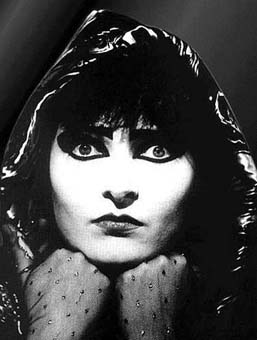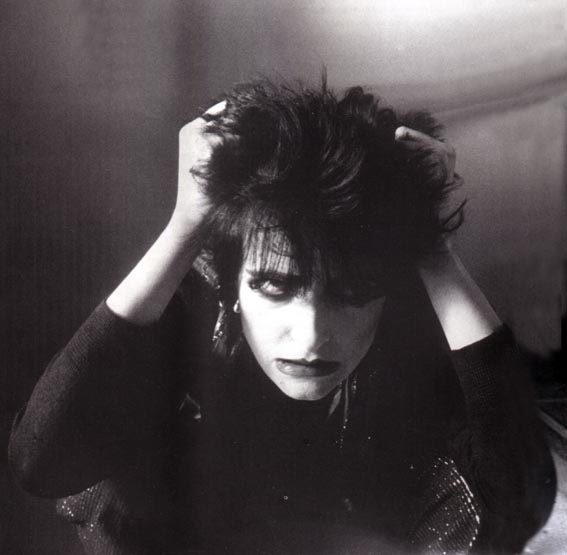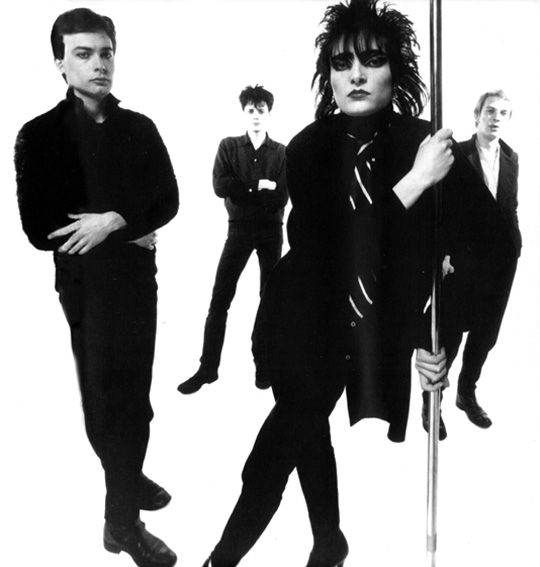The first fruits of the new arrangement came with the 'Happy House' single in March 1980. This was quite clearly a different animal then before yet still managed to sound like a Siouxsie And The Banshees record. It was a trick the band would repeat again and again. If the themes of madness and childhood established continuity, the sound was lighter and less urgent than before. the bass was far more prominent, Budgie seduced subtle innuendos from his kit instead of trying to murder it, while McGeoch weaved in and out with fluid, mysterious guitar lines heavily bathed in echo.
But Morris and McKay weren't forgotten. The flip, 'Drop Dead/Celebration' was a gut-wrenching affair so filled with venom that the words were almost indecipherable. "I suppose it was inspired by them," commented Sioux, "but then you can look at a turd in the street and be inspired to write a song about it." Any doubt was allayed by the etched message in the run-off groove: 'Bye Bye Blackheads'. The song doubles as pastiche (with its inverted 'Jigsaw Feeling' riff) and purification, but if they thought this would purge them of the pair, then they were wrong.
There was still some unfinished business of the cancelled dates from the previous tour and McGeoch was persuaded to join the band for seven Scottish dates plus two nights at London's Music Machine. Of all places, it kicked off with a warm-up date in Magazine's home town of Manchester.
Among the new songs featured were 'Hybrid', 'Desert Kisses' and 'Christine', the latter already being touted as a follow-up to 'Happy House'.
When McGeoch left for a spring tour with Magazine, The Banshees faced a difficult decision whether to share a guitarist with another name band or find a more permanent replacement. The decision was made for them when John announced he was quitting Magazine to pursue a variety of solo projects. Apart from moonlighting as a Banshee he was a member of Steve Strange's pick-up band Visage. Also lined up was session work with Generation X and production chores with Belgian group De Kreuners; recently, he'd stood in for a flu-ridden Stuart Adamson on a Skids session recorded for John Peel (which also featured Steve on backing vocals). Though legal difficulties prevented John from calling himself a Banshee he was, for all intents and purposes, the band's fourth member.
Now the group's sound had undergone a remarkable transformation on 'happy House', this was utilised to much greater effect on 'Christine' which harked back to the moodiness of the earlier material. Though traces of Charles Manson, children's TV, R.D. Laing, and disaster news stories had inhabited the band's early work, it was the infamous schizophrenic Christine Sizemore who became the first of The Banshees' great obsessions. Steve learnt of her in a Sunday colour supplement a couple of years earlier and became intrigued by this American woman with 22 identifiable personalities. Each one had a name and several were put to good use on the song: Strawberry Girl, Banana Split lady, Turtle Lady and Purple Lady.
Once again, the B-side featured the more typical material, and 'Eve White/Eve Black proved that the old bite had far from deserted them. As with 'Drop Dead', it had been produced without the assistance of Nigel Gray (fresh from working with The Police, and recommended by McGeoch), who delicately handled the A-sides. One reviewer wrote that the song was The Banshees' version of Pink Floyd's 'Careful With That Axe, Eugene' and he wasn't far wrong. Both share an opening air of quiet unease, pierced by a blood-curdling scream that acts as a cue for a full-blast aural assault. Unsurprisingly, it remained a stage favourite for several years.


